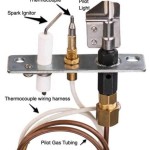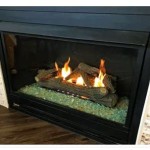How to Cover a Brick Fireplace with Stone
Covering a brick fireplace with stone can dramatically transform the aesthetic of a living space, adding a touch of rustic elegance or modern sophistication. This project, while achievable for experienced DIY enthusiasts, demands meticulous planning, careful execution, and a thorough understanding of materials and techniques. This article provides a comprehensive guide to the process, outlining the necessary steps to successfully cover a brick fireplace with stone veneer.
Assessing the Existing Fireplace and Planning the Design
Before embarking on any physical work, a thorough assessment of the existing brick fireplace is crucial. This involves inspecting the brick for any signs of damage, such as cracks, loose bricks, or crumbling mortar. Addressing these issues prior to applying the stone veneer is essential to ensure a stable and long-lasting result. Any structural deficiencies must be repaired professionally before proceeding.
Furthermore, accurate measurements of the fireplace are paramount. These measurements will determine the quantity of stone veneer required and will inform the layout of the stone. Consider the dimensions of both the fireplace surround and the hearth when taking measurements. It is always advisable to purchase slightly more stone veneer than calculated to account for cuts, waste, and potential errors during installation.
Design considerations are equally important. The choice of stone veneer will significantly impact the overall look of the fireplace. Options range from natural stone to manufactured stone veneer, each offering distinct characteristics in terms of texture, color, and pattern. Natural stone provides a unique, organic appearance, while manufactured stone offers greater consistency and often a lower cost. The style of stone should complement the existing décor and architectural style of the room.
Visualizing the finished product is key to a successful outcome. Consider using design software or creating a mock-up with cardboard or paper to get a sense of how the chosen stone veneer will look on the fireplace. Pay attention to details such as the placement of the stone, the arrangement of different sizes and shapes, and the overall balance of the design.
Finally, it is critical to consider the building codes and regulations in the area. Some municipalities may require permits for fireplace modifications, and there may be specific requirements for the type of materials used and the installation methods employed. Checking with the local building department before starting the project can prevent costly delays and ensure compliance with all applicable regulations.
Preparing the Brick Surface for Stone Veneer
Proper preparation of the brick surface is fundamental to ensuring a strong and durable bond between the stone veneer and the fireplace. The first step involves cleaning the brick thoroughly to remove any dirt, dust, grease, or loose debris. A wire brush and a solution of water and mild detergent can be used to scrub the brick surface. Rinse thoroughly with clean water and allow the brick to dry completely before proceeding.
Once the brick is clean and dry, apply a bonding agent to enhance adhesion. A bonding agent, typically a latex-based or acrylic-based product, creates a textured surface that promotes a strong mechanical bond between the brick and the mortar. Apply the bonding agent according to the manufacturer's instructions, ensuring that it is evenly distributed across the entire surface of the brick. Allow the bonding agent to dry completely before moving on to the next step.
For installations involving heavier stone veneers, it may be necessary to install metal lath onto the brick surface. Metal lath, a wire mesh material, provides additional support and reinforcement for the stone. Attach the metal lath to the brick using masonry nails or screws, ensuring that it is securely fastened and that it overlaps the brick surface by at least a few inches on all sides. The lath should be embedded in a scratch coat of mortar before the stone veneer is applied.
The scratch coat is a thin layer of mortar applied over the metal lath. It provides a level surface for the stone veneer and further enhances the bond between the brick and the stone. Mix the mortar according to the manufacturer's instructions and apply it to the metal lath using a trowel. Use a notched trowel to create grooves in the mortar, which will provide a key for the stone veneer to adhere to. Allow the scratch coat to cure for at least 24 hours before proceeding with the installation of the stone veneer.
If the existing brick fireplace has a particularly smooth surface, consider roughening it up with a chisel or a grinder. This will create a mechanical bond that will improve the adhesion of the bonding agent and the mortar. Take care to avoid damaging the brick during this process.
Installing the Stone Veneer
With the brick surface properly prepared, the installation of the stone veneer can begin. Start by dry-fitting the stone veneer pieces to determine the best layout and arrangement. This will help to avoid any awkward cuts or gaps and ensure a visually appealing result. Pay attention to the natural variations in color and texture of the stone, and arrange the pieces in a way that creates a balanced and harmonious look.
Mix the mortar according to the manufacturer's instructions, ensuring that it is the correct consistency. The mortar should be thick enough to hold the stone veneer in place but not so thick that it is difficult to spread. Apply a layer of mortar to the back of each stone veneer piece using a trowel. The mortar should be thick enough to completely cover the back of the stone and to create a strong bond with the prepared surface.
Press the stone veneer piece firmly onto the prepared surface, ensuring that it is properly aligned and level. Use a rubber mallet to gently tap the stone into place, ensuring that it is fully embedded in the mortar. Remove any excess mortar that squeezes out from between the stone pieces using a trowel or a putty knife. Clean the face of the stone with a damp sponge to remove any mortar residue.
Continue installing the stone veneer pieces, working from the bottom up. Use spacers, such as small pieces of wood or plastic, to maintain consistent joint widths between the stone pieces. The width of the joints will depend on the style of stone veneer and the desired aesthetic. Allow the mortar to cure for at least 24 hours before removing the spacers.
Once the mortar has cured, the joints between the stone veneer pieces can be filled with grout. Grout is a type of mortar that is specifically designed for filling narrow joints. Mix the grout according to the manufacturer's instructions and apply it to the joints using a grout float. Use a damp sponge to remove any excess grout from the face of the stone. Allow the grout to cure for at least 72 hours before sealing the stone veneer.
Sealing the stone veneer will protect it from water damage, staining, and fading. Apply a stone sealer according to the manufacturer's instructions, ensuring that it is evenly distributed across the entire surface of the stone. Allow the sealer to dry completely before using the fireplace.
Throughout the installation process, periodically check the level of the stone veneer pieces using a level. Make adjustments as needed to ensure that the finished surface is plumb and level.
Addressing Specific Challenges and Considerations
Certain challenges may arise during the process of covering a brick fireplace with stone veneer. One common challenge is dealing with irregular brick surfaces. If the brick surface is uneven or contains protruding bricks, it may be necessary to level the surface with a layer of mortar before applying the stone veneer. Alternatively, consider using a thicker layer of mortar on the back of the stone veneer pieces to compensate for the unevenness.
Another challenge is cutting the stone veneer to fit around corners, edges, and other features. A wet saw with a diamond blade is the most effective tool for cutting stone veneer. Use caution when operating the wet saw and wear appropriate safety gear, such as safety glasses and gloves. Mark the cut lines clearly on the stone veneer before cutting, and make small, precise cuts to avoid chipping or breaking the stone.
When working with natural stone veneer, it is important to be aware of the natural variations in color and texture. These variations are what give natural stone its unique character, but they can also present a challenge when trying to create a consistent look. Consider mixing and matching stone pieces from different batches to minimize the appearance of any noticeable color differences.
Finally, it is crucial to maintain proper ventilation during the installation process. Mortar and grout can release harmful fumes, so it is important to work in a well-ventilated area. Open windows and doors to allow fresh air to circulate, and consider using a respirator if necessary.
By following these steps and addressing any potential challenges, it is possible to successfully cover a brick fireplace with stone veneer and create a stunning focal point in any living space. Remember to prioritize safety, plan carefully, and pay attention to detail throughout the process.

How To Cover A Brick Fireplace With Stone

Pin By Tarra Wills Efkarpidis On For The Home Brick Fireplace Remodel Stone

Read This Before Your Stone Fireplace Makeover Understanding Undertones

Brick Fireplace Makeover Pine And Prospect Home

Pin On Home Remodel

Stone Veneer Over A Brick Fireplace Updates The Look

How To Cover A Brick Fireplace With Wood Stone Nina Hendrick Home

Stone Veneer Over A Brick Fireplace Updates The Look

Reface A Fireplace With The Look Of Stone Or Brick Barron Designs

Brickfireplaceideas Com Brick Fireplace Makeover Home Stone Designs
Related Posts








